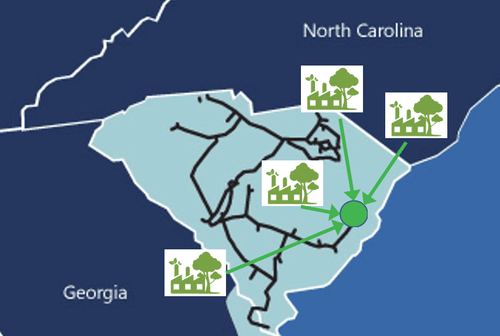A new industry-led coalition, Great Lakes Clean Hydrogen (GLCH), has been formed as a coordinated hydrogen hub effort to transition the Midwest into a leading low-carbon fuel production center.
The coalition of industry, academic, federal laboratories and non-profit organizations will help manufacturing, aviation, transportation and power-generation industries reduce their carbon emission footprint. GLCH will pursue funding from the U.S. Department of Energy’s (DOE) $8 billion regional clean hydrogen hub initiative, according to a press release.
Utilizing nuclear power, supplemented by renewable solar energy, GLCH will produce clean hydrogen through water electrolysis aligned with the DOE’s Hydrogen Shot goals and will result in near-term cost-effective decarbonization, pollutant reductions and high-paying employment opportunities. The focus on pure hydrogen production through electrolysis avoids the challenge of capturing and sequestering carbon dioxide.
The Great Lakes Clean Hydrogen hub is guided through a steering committee led by representatives from The University of Toledo, Case Western Reserve University, Owens Community College, Michigan Technological University, University of Michigan, the Idaho National Laboratory, the Pacific Northwest National Laboratory, the Lawrence Livermore National Laboratory and Argonne National Laboratory, Energy Harbor, Cleveland-Cliffs, General Electric Aviation, Linde, Plug Power, Nexceris, NEL, First Solar, GEM, the Toledo Area Regional Transit Authority (TARTA), the Regional Growth Partnership and the Ohio Fuel Cell Coalition and others, the release states.
Proposed concepts with Cleveland-Cliffs include its role as a consumer of clean hydrogen in its new direct reduced iron-making facility to produce clean hot briquetted iron, a key quality input for steelmaking, as well as use of clean hydrogen in its blast furnaces — all in the Midwest.
Utilizing the carbon free nuclear power generated by Energy Harbor’s Davis-Besse Power Station, GLCH will produce clean hydrogen through water electrolysis, according to a separate press release.
Research centers will address technical challenges involved in hydrogen production, transportation and accelerating deployment of emerging technologies through a collaborative network of national laboratory, university and industry partners.







